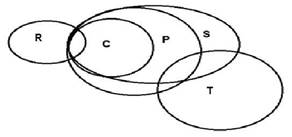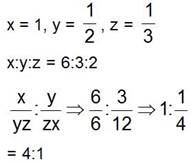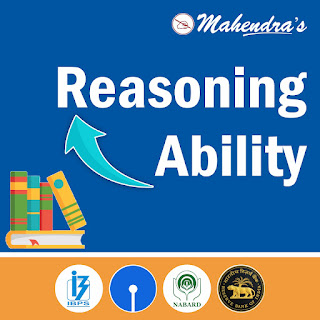Mahendras has started special quizzes for IBPS | RBI | SBI | NABARD Exam so that you can practice more and more to crack the examination. IBPS | RBI | SBI | NABARDspecial quiz series will mold your preparations in the right direction and the regular practice of these quizzes will be really very helpful in scoring good marks in the Examination. Here we are providing you the important question of reasoning ability for the IBPS | RBI | SBI | NABARD Exam.
Q.1-2. Read the following information carefully and answer the questions given below.
Six persons of the same family viz. A, B, C, D, E and F are sitting around a circular table facing the center. Each of them have a different age. D is the oldest of them all. D’s grand-daughter C is younger than B, who is younger than his brother in law A. F’s grand-daughter is sitting second to the right of C. A is unmarried. D’s daughter is sitting to the immediate left of A. There are four generations in the family.
दी गई जानकारी का ध्यानपूर्वक अध्ययन कीजिए और नीचे दिए गए प्रश्नों के उत्तर दीजिए।
एक परिवार के छह सदस्य A, B, C, D, E और F एक वृत्ताकार मेज के चारों ओर केंद्र की ओर उन्मुख होकर बैठे हैं। उनमें से प्रत्येक की आयु भिन्न है। D इनमें से सबसे बड़ा सदस्य है। D की ग्रैंड-डॉटर C, B से छोटी है, जो अपने ब्रदर-इन-लॉ A से छोटा है। F की ग्रैंड-डॉटर, C के दायें से दूसरे स्थान पर है। A अविवाहित है। D की पुत्री, A के ठीक बायें बैठी है। इस परिवार में चार पीढियां हैं।
Q.1. How many of the given six persons are older than F?
(1) One
(2) Two
(3) Three
(4) Cannot be determined
(5) None of these
दिए गए छह व्यक्तियों में से कितने व्यक्ति F से बड़े हैं?
(1) एक
(2) दो
(3) तीन
(4) निर्धारित नहीं किया जा सकता
(5) इनमें से कोई नहीं
Q.2. How is E related to F?
(1) Daughter
(2) Sister-in-law
(3) Grand-daughter
(4) Cannot be determined
(5) None of these
E, F से किस प्रकार संबंधित है?
(1) पुत्री
(2) सिस्टर-इन-लॉ
(3) ग्रैंड-डॉटर
(4) निर्धारित नहीं किया जा सकता
(5) इनमें से कोई नहीं
Q.3. Given below are five statements out of which one can be logically concluded from other four, you have to mark that statement as your answer.
Statements:
(1) All C are P
(2) Some P are T
(3) Some C are R
(4) All P are S
(5) Some S are C
नीचे पांच कथन दिए गए हैं जिनमें से एक को अन्य चार में से तर्कसंगत रूप से निष्कर्ष के रूप में निकाला जा सकता है, आपको उस कथन को अपने उत्तर के रूप में चिह्नित करना है।
कथन :
(1) सभी C, P है
(2) कुछ P, T है
(3) कुछ C, R है
(4) सभी P, S है
(5) कुछ S, C है
Q.4. Given below are five statements out of which one can be logically concluded from other four, you have to mark that statement as your answer.
Statements:
(1) Some A are B
(2) Some C are A
(3) Some C are D
(4) All B are C
(5) Some D are E
नीचे पांच कथन दिए गए हैं जिनमें से एक को अन्य चार में से तर्कसंगत रूप से निष्कर्ष के रूप में निकाला जा सकता है, आपको उस कथन को अपने उत्तर के रूप में चिह्नित करना है।
कथन :
(1) कुछ A, B है
(2) कुछ C, A है
(3) कुछ C, D है
(4) सभी B, C है
(5) कुछ D, E है
Q.5. Given below are five statements out of which one can be logically concluded from other four, you have to mark that statement as your answer.
Statements:
(1) All P are C
(2) No P is B
(3) All W are B
(4) No T is W
(5) All T are P
नीचे पांच कथन दिए गए हैं जिनमें से एक को अन्य चार में से तर्कसंगत रूप से निष्कर्ष के रूप में निकाला जा सकता है, आपको उस कथन को अपने उत्तर के रूप में चिह्नित करना है।
कथन :
(1) सभी P, C है
(2) कोई P, B नहीं है
(3) सभी W, B है
(4) कोई T, W नहीं है
(5) सभी T, P हैं
Q.6-10. In the following questions, relationship between different elements is shown in the statement. These statements are followed by two conclusions I and II.
(1) If only conclusion I is true.
(2) If only conclusion II is true.
(3) If either conclusion I or II is true.
(4) If neither conclusion I nor II is true.
(5) If both conclusions I and II are true.
निम्न प्रश्नों में, दिये गये कथनों में विभिन्न तत्वों के बीच संबंध दर्शाया गया है। इन कथनों के बाद दो निष्कर्ष I और II दिए गए हैं।
(1) यदि केवल निष्कर्ष I सत्य है।
(2) यदि केवल निष्कर्ष II सत्य है।
(3) यदि या तो निष्कर्ष I या II सत्य है।
(4) यदि न तो निष्कर्ष I न ही II सत्य है।
(5) यदि दोनों निष्कर्ष I और II सत्य है।
Q.6. Statements: P < L < A > N = K > S, C > A
Conclusions: I. C > P II. S < C
कथन: P < L < A > N = K > S, C > A
निष्कर्ष: I. C > P II. S < C
Q.7. Statements: I < J < K < L > M > N, B > K, B=S
Conclusions: I. S > I II. S > N
कथन : I < J < K < L > M > N, B > K, B=S
निष्कर्ष: I. S > I II. S > N
Q.8. Statements: J > U > N = K < E < D
Conclusions: I. U > D II. N > D
कथन: J > U > N = K < E < D
निष्कर्ष: I. U > D II. N > D
Q.9. Statements: P < L < A > N = K > S, C > A
Conclusions: I. K > L II. L < K
कथन : P < L < A > N = K > S, C > A
निष्कर्ष: I. K > L II. L < K
Q.10. Statements: I < J < K < L > M > N, B > K, B=S
Conclusions: I. S > J II. L > J
कथन : I < J < K < L > M > N, B > K, B=S
निष्कर्ष: I. S > J II. L > J
ANSWER-
Q.1. 4

Q.2. 3

Q.3. 5

Q.4. 2

Q.5. 4

Q.6. 5

Q.7. 1
Statement/ कथन:

Conclusions/ निष्कर्ष:
I. S > I (True/ सत्य)
II. S ≥ N (False/ असत्य)
Q.8. 4
Statement/ कथन: J > U ≥ N = K ≤ E < D
Conclusions/ निष्कर्ष:
I. U > D (False/ असत्य)
II. N > D (False/ असत्य)
Q.9. 3
Statement/ कथन:

Conclusions/ निष्कर्ष:
I. K ≥ L
II. L ≤ K
Either I or II is true/ या तो I या II सत्य है।
Q.10. 2
Statement/ कथन:

Conclusions/ निष्कर्ष:
I. S > J (False/असत्य)
II. L ≥ J (True/सत्य)






0 comments:
Post a Comment
MAHENDRA GURU